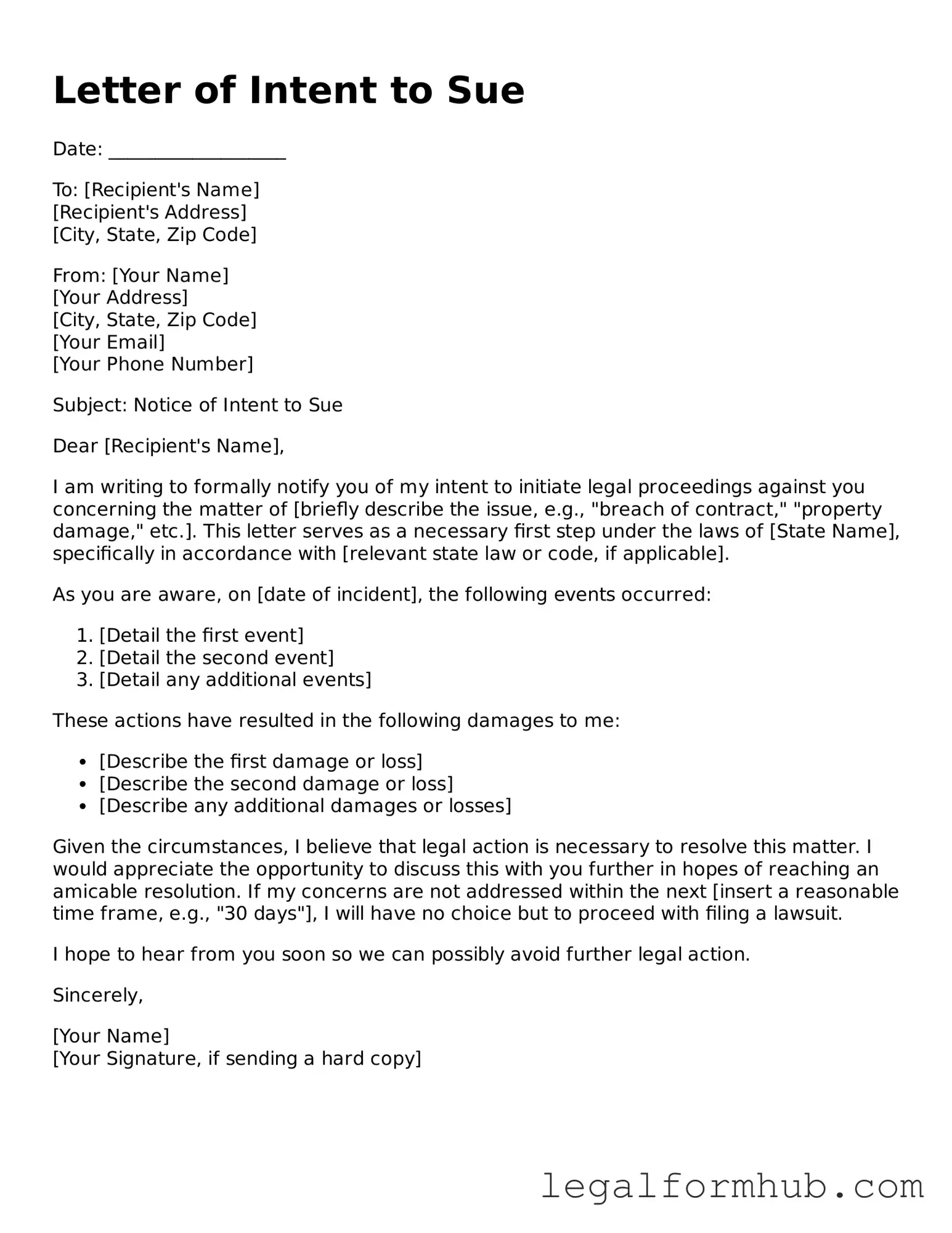The Letter of Intent to Sue is similar to a Demand Letter, which serves as a formal notice to the opposing party about a grievance. A Demand Letter outlines the specific issues at hand and requests a resolution, often including a deadline for response. This document is typically the first step before legal action is taken, emphasizing the seriousness of the situation while providing the other party an opportunity to settle the matter amicably. Like the Letter of Intent to Sue, it aims to prompt a response and potentially avoid litigation.
Another document that resembles the Letter of Intent to Sue is the Cease and Desist Letter. This letter is used to formally request that an individual or organization stop a particular action that is believed to be unlawful or harmful. It clearly states the behavior that is objectionable and warns of potential legal action if the behavior continues. Both documents serve as a precursor to legal proceedings, aiming to resolve disputes without the need for a lawsuit.
The Notice of Claim is another similar document. This is often used in cases involving government entities and is a formal notification that a claim will be made against them. It provides the government with an opportunity to address the issue before a lawsuit is filed. Like the Letter of Intent to Sue, it is an essential step in the legal process, ensuring that the other party is aware of the impending action and can respond accordingly.
A Settlement Demand is also comparable to the Letter of Intent to Sue. This document outlines the terms under which a party is willing to resolve a dispute without going to court. It often includes specific compensation or actions the sender is seeking. Both documents are designed to initiate negotiations and encourage resolution, highlighting the sender's intention to avoid litigation if possible.
An Investment Letter of Intent (LOI) is crucial for those seeking clarity in their investment dealings, as it lays the groundwork for subsequent negotiations and agreements. This document clearly expresses the intent to engage in a more comprehensive contract, thereby reducing misunderstandings. For further guidance, you can refer to the Legal PDF Documents that provide essential templates and resources to navigate this initial phase effectively.
Finally, a Pre-Litigation Notice shares similarities with the Letter of Intent to Sue. This notice is sent to inform the opposing party that legal action may be forthcoming if a resolution is not reached. It typically includes details about the dispute and a request for a response. Both documents serve as a warning and a call to action, allowing parties to consider their options before entering the courtroom.
